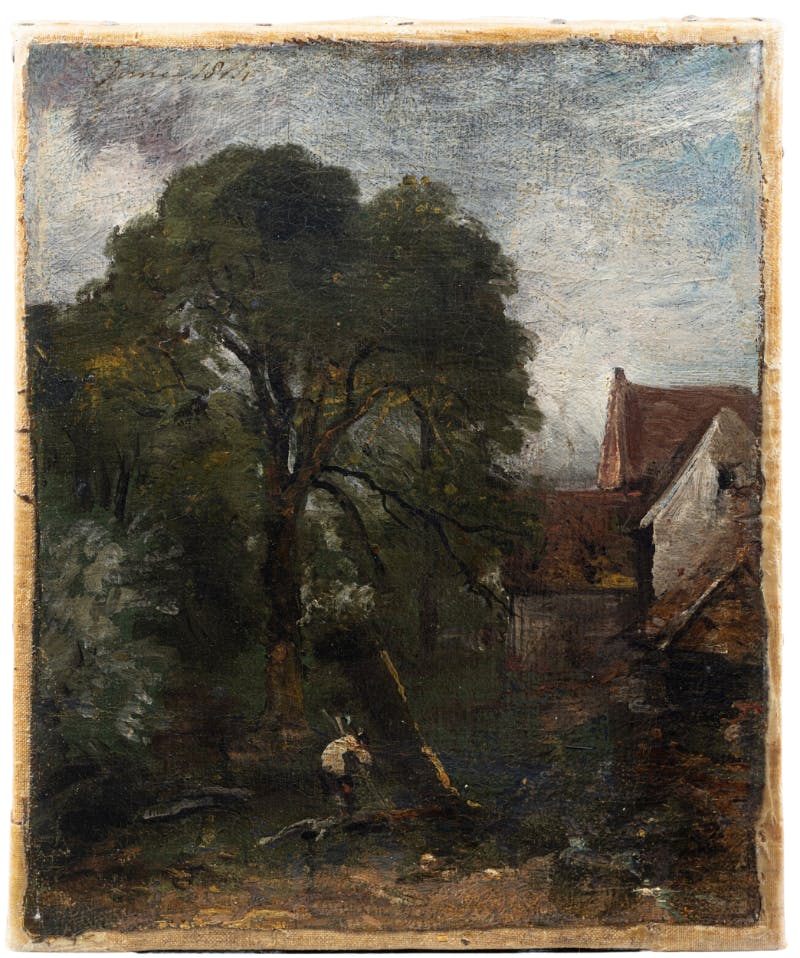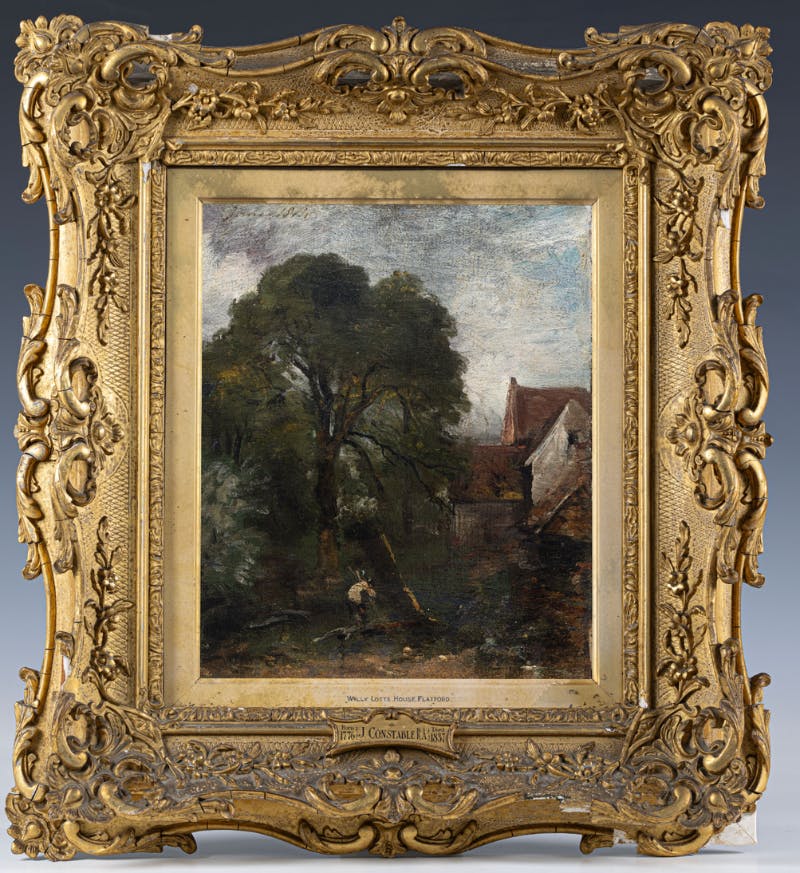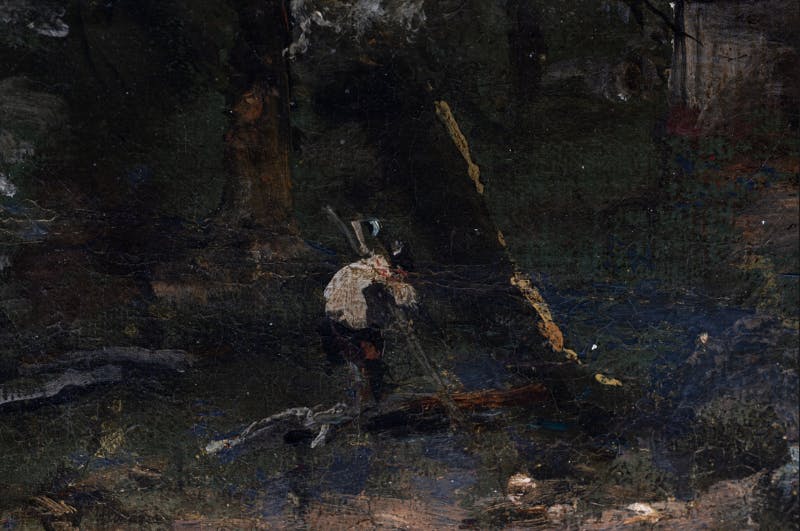Rediscovered John Constable Sketch Fetches $240,000 at Auction
At a recent auction in Guernsey, a rediscovered oil sketch by the renowned English Romantic painter John Constable featuring 'The Hay Wain' cottage fetched £200,000 (about $240,000).
A recently rediscovered oil sketch by John Constable (1776-1837) went up for auction on September 21 at Martel Maides Auctions, in St Peter Port, with an estimate of £80-120,000 ($96,000-145,000). The sketch, titled View of the back of Willy Lott's House with Log-cutter, from 1814, shows Willy Lott’s House at Flatford, which appears in Constable’s most famous painting The Hay Wain, currently housed at The National Gallery.

The painting had been hidden away in a private collection and was thought to be lost for over four decades. Its last recorded appearance was in 1979 when it featured in a catalogue raisonné of the artist’s work published by Rizzoli.
Related: 7 Paintings of London You Should Know
The research conducted by Anne Lyles traced the provenance of this oil sketch back to the artist's own grandson, Hugh Golding Constable (1868-1949), who subsequently sold it to the fine art dealers the Leggatt Brothers. It then featured in a historic exhibition organized by the Leggatts that was the first to be solely dedicated to Constable's work.

John Constable, a prominent figure in the English Romantic art movement, made a lasting impression on the art world with his renowned depictions of the English countryside, particularly the landscapes surrounding the River Stour, often affectionately referred to as 'Constable Country.' Born in the Suffolk village of East Bergholt, Constable began his artistic journey by enrolling in the Royal Academy schools in 1799. While he did exhibit his works at prestigious venues such as the Royal Academy, his unconventional style initially faced criticism and challenges within the academic art scene.
Related: William Turner: In the Heart of Light
Constable's innovative approach to landscape painting, characterized by a freer and more realistic representation of nature, defied the prevailing idealism of his time. His influence extended across Europe, notably in France, where he played a role in shaping the evolving landscape of art. Constable is recognized as a precursor to the Impressionist movement, alongside J.M.W. Turner, although his direct influence on Impressionism emerged more significantly in the mid-19th century through artists like the Barbizon School painters who valued his naturalistic techniques.

Willy Lott’s House, situated in the picturesque hamlet of Flatford along the north bank of the River Stour in Suffolk, holds a special place in the heart of Constable Country. For Constable, this quaint farmhouse was emblematic of the cherished rural way of life that inspired much of his work. When painting in Suffolk in the early part of his career, it was Constable’s regular practice to make oil sketches in the open air, and there is a strong likelihood that this particular sketch was made by him directly from the natural surroundings.
Related: The Art of Plein Air Painting

After a fierce bidding battle, the sketch of Willy Lott’s House was bought for £200,000 (about $240,000), almost double its estimate, by an anonymous private collector based in Guernsey, and is expected to remain on the island. Jonathan Voak, a paintings specialist at the auction house, told The Guardian: "There was a great atmosphere in the saleroom. Multiple telephone bidders and lots of people in the room who wanted to see it being sold. The interest has been phenomenal."
Want articles like this delivered straight to your inbox? Subscribe to our free newsletter!
"The painting was found among a large number of items that came from an old terrace house in Guernsey. It was first seen by a member of our team hanging in a dark corner of the dining room", Voak added. "That was some years ago and at that time it was certainly not thought to be a genuine Constable. It subsequently came to MMA when the owner died as part of the deceased estate."


